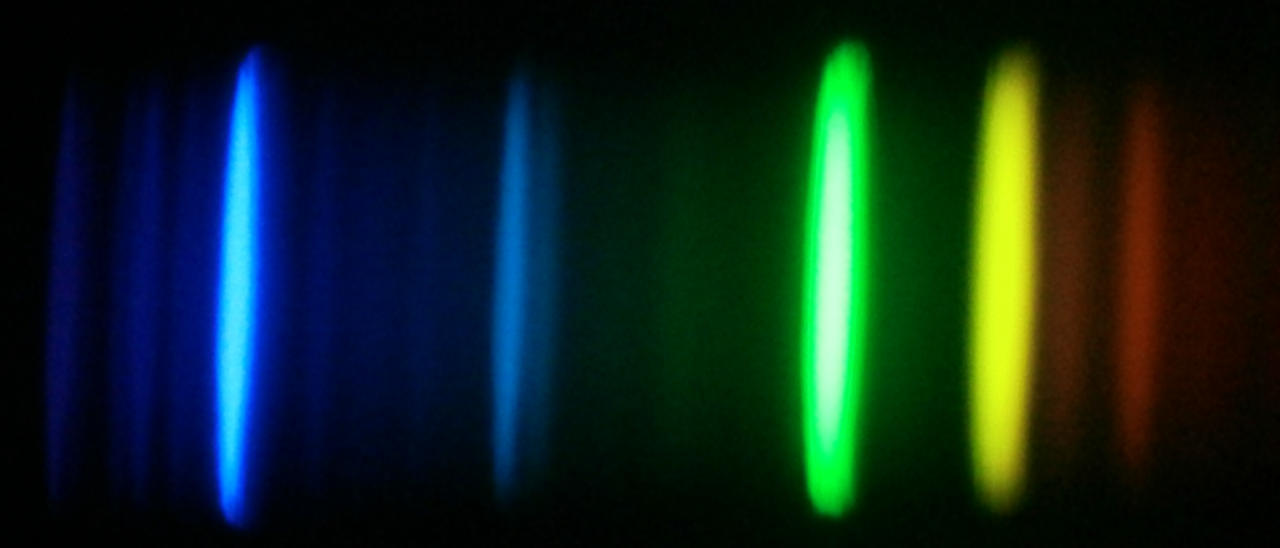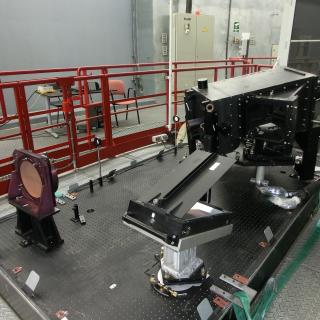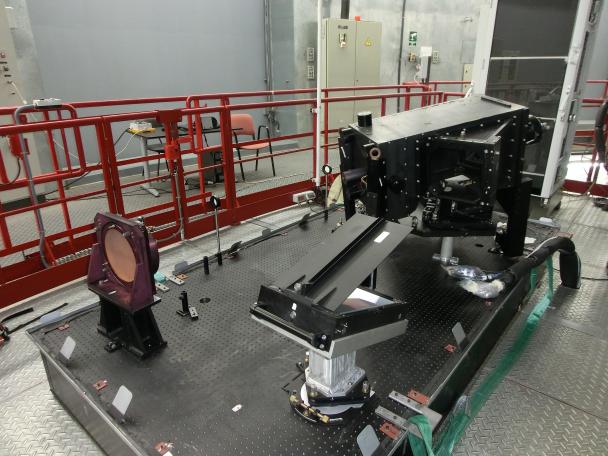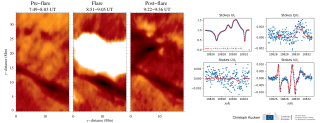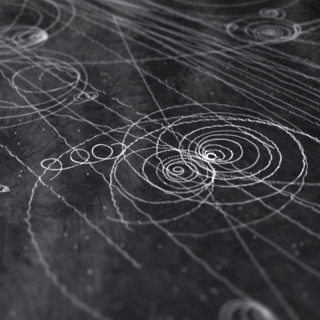Grants related:
General
Stellar spectroscopy allows us to determine the properties and chemical compositions of stars. From this information for stars of different ages in the Milky Way, it is possible to reconstruct the chemical evolution of the Galaxy, as well as the origin of the elements heavier than boron, created mainly in stellar interiors. It is also possible to study stellar formation, and the formation of the Galaxy, from the signature of the Galactic potential on the stellar orbits, and the distributions of mass, ages, and the abundance of heavy elements.
Obtaining high-resolution spectra, as necessary for studies of chemical compositions, requires advanced and efficient instrumentation. This is particularly true for research that calls for large stellar samples, which demands the observation of hundreds or thousands of sources simultaneously. Efficiency requires that the data processing and analysis are performed in an automated way.
The interpretation of spectra is based on physical models of the atmospheres of the stars, from where the light that we observe escapes the stars. The main ingredients for building such models are the fluid dynamics, and the properties of the atoms, ions, and molecules, especially regarding their interactions with the radiation coming from the stellar interior.
Once we have a plausible model, it is possible to compute in detail how the radiation propagates through the stellar atmosphere, and the emergent spectrum, which can then be iteratively compared with the observations to refine the model.
This project covers three different research fronts:
- Improving model atmospheres and simulations of stellar spectra.
- Developing tools for acquisition, reduction, and analysis of spectroscopic observations, in particular for the determination of chemical abundances in stars.
- Designing, preparing, and executing spectroscopic studies of stars aimed at understanding a) the most relevant aspects of the physics of stellar atmospheres, b) the formation and evolution of stars, c) the origin of the chemical elements, and d) the formation, structure, and evolution of the Milky Way galaxy.
Members
Results
- Complete the installation and commissioning of HORuS on GTC
- Discover two new stars with more than 100,000 times less iron than the Sun
- Complete the classification of all the APOGEE spectra with K-means
- Publish a complete collection of model stellar spectra for stars O to M
- Identify the signature of chemical diffusion in the atmospheres of the stars in the cluster M67
Scientific activity
Related publications
-
The Seventeenth Data Release of the Sloan Digital Sky Surveys: Complete Release of MaNGA, MaStar, and APOGEE-2 Data
This paper documents the seventeenth data release (DR17) from the Sloan Digital Sky Surveys; the fifth and final release from the fourth phase (SDSS-IV). DR17 contains the complete release of the Mapping Nearby Galaxies at Apache Point Observatory (MaNGA) survey, which reached its goal of surveying over 10,000 nearby galaxies. The complete release
Abdurro'uf et al.Advertised on:
42022 -
Recurrent Strong Outbursts of an EXor-like Young Eruptive Star Gaia20eae
We present follow-up photometric and spectroscopic observations, and subsequent analysis of Gaia20eae. This source triggered photometric alerts during 2020 after showing a ~3 mag increase in its brightness. Its Gaia Alert light curve showed the shape of a typical eruptive young star. We carried out observations to confirm Gaia20eae as an eruptive
Cruz-Sáenz de Miera, Fernando et al.Advertised on:
32022 -
Detailed Chemical Abundances for a Benchmark Sample of M Dwarfs from the APOGEE Survey
Individual chemical abundances for 14 elements (C, O, Na, Mg, Al, Si, K, Ca, Ti, V, Cr, Mn, Fe, and Ni) are derived for a sample of M dwarfs using high-resolution, near-infrared H-band spectra from the Sloan Digital Sky Survey-IV/Apache Point Observatory Galactic Evolution Experiment (APOGEE) survey. The quantitative analysis included synthetic
Souto, Diogo et al.Advertised on:
32022 -
Fundamental physics with ESPRESSO: Precise limit on variations in the fine-structure constant towards the bright quasar HE 0515−4414
The strong intervening absorption system at redshift 1.15 towards the very bright quasar HE 0515−4414 is the most studied absorber for measuring possible cosmological variations in the fine-structure constant, α. We observed HE 0515−4414 for 16.1 h with the Very Large Telescope and present here the first constraint on relative variations in α with
Murphy, Michael T. et al.Advertised on:
22022 -
APOGEE detection of N-rich stars in the tidal tails of Palomar 5
Recent results from chemical tagging studies using Apache Point Observatory Galactic Evolution Experiment data suggest a strong link between the chemical abundance patterns of stars found within globular clusters (GC), and chemically peculiar populations in the Galactic halo field. In this paper, we analyse the chemical compositions of stars within
Phillips, Siân G. et al.Advertised on:
32022 -
A stellar stream remnant of a globular cluster below the metallicity floor
Stellar ejecta gradually enrich the gas out of which subsequent stars form, making the least chemically enriched stellar systems direct fossils of structures formed in the early Universe 1. Although a few hundred stars with metal content below 1,000th of the solar iron content are known in the Galaxy 2-4, none of them inhabit globular clusters
Martin, Nicolas F. et al.Advertised on:
12022 -
J-PLUS: Searching for very metal-poor star candidates using the SPEEM pipeline
Context. We explore the stellar content of the Javalambre Photometric Local Universe Survey (J-PLUS) Data Release 2 and show its potential for identifying low-metallicity stars using the Stellar Parameters Estimation based on Ensemble Methods (SPEEM) pipeline. Aims: SPEEM is a tool used to provide determinations of atmospheric parameters for stars
Galarza, Carlos Andrés et al.Advertised on:
12022 -
Retrieving the transmission spectrum of HD 209458b using CHOCOLATE: a new chromatic Doppler tomography technique
Multiband photometric transit observations or low-resolution spectroscopy (spectro-photometry) are normally used to retrieve the broadband transmission spectra of transiting exoplanets in order to assess the chemical composition of their atmospheres. In this paper we present an alternative approach for recovering the broadband transmission spectra
Esparza-Borges, E. et al.Advertised on:
12022 -
The Pristine survey - XIV. Chemical analysis of two ultra-metal-poor stars
Elemental abundances of the most metal-poor stars reflect the conditions in the early Galaxy and the properties of the first stars. We present a spectroscopic follow-up of two ultra-metal-poor stars ([Fe/H] < -4.0) identified by the survey Pristine: Pristine 221.8781+9.7844 and Pristine 237.8588+12.5660 (hereafter Pr 221 and Pr 237, respectively)
Lardo, C. et al.Advertised on:
122021 -
Gaia Early Data Release 3. Updated radial velocities from Gaia DR2
Context. Gaia's Early Third Data Release (EDR3) does not contain new radial velocities because these will be published in Gaia's full third data release (DR3), expected in the first half of 2022. To maximise the usefulness of EDR3, Gaia's second data release (DR2) sources (with radial velocities) are matched to EDR3 sources to allow their DR2
Seabroke, G. M. et al.Advertised on:
92021 -
HD 22496 b: The first ESPRESSO stand-alone planet discovery
Context. The ESPRESSO spectrograph is a new powerful tool developed to detect and characterize extrasolar planets. Its design allows an unprecedented radial velocity precision (down to a few tens of cm s −1) and long-term thermomechanical stability. Aims: We present the first stand-alone detection of an extrasolar planet by blind radial velocity
Lillo-Box, J. et al.Advertised on:
102021 -
The Pristine survey XIII: uncovering the very metal-poor tail of the thin disc
We evaluate the rotational velocity of stars observed by the Pristine survey towards the Galactic anticentre spanning a wide range of metallicities from the extremely metal-poor regime ([Fe/H] < -3) to nearly solar metallicity. In the Galactic anticentre direction, the rotational velocity (V ϕ) is similar to the tangential velocity in the galactic
Fernández-Alvar, Emma et al.Advertised on:
112021 -
Warm terrestrial planet with half the mass of Venus transiting a nearby star
In recent years, the advent of a new generation of radial velocity instruments has allowed us to detect planets with increasingly lower mass and to break the one Earth-mass barrier. Here we report a new milestone in this context by announcing the detection of the lowest-mass planet measured so far using radial velocities: L 98-59 b, a rocky planet
Demangeon, O. D. S. et al.Advertised on:
92021 -
Symbiotic Stars in the Apache Point Observatory Galactic Evolution Experiment Survey: The Case of LIN 358 and SMC N73 (LIN 445a)
LIN 358 and SMC N73 are two symbiotic binaries in the halo of the Small Magellanic Cloud, each composed of a hot white dwarf accreting from a cool giant companion. In this work, we characterize these systems using a combination of spectral energy distribution (SED)-fitting to the extant photometric data spanning a broad wavelength range (X-ray
Washington, Jasmin E. et al.Advertised on:
92021 -
Understanding the Angular Momentum Evolution of T Tauri and Herbig Ae/Be Stars
We investigate a sample of six Herbig Ae/Be stars belonging to the Orion OB1 association, as well as 73 low-mass objects, members of the σ Orionis cluster, in order to explore the angular momentum evolution at early stages of evolution, and its possible connection with main-sequence Ap/Bp magnetic stars. Using FIES and HECTOCHELLE spectra, we
Pinzón, Giovanni et al.Advertised on:
92021 -
HiPERCAM: a quintuple-beam, high-speed optical imager on the 10.4-m Gran Telescopio Canarias
HiPERCAM is a portable, quintuple-beam optical imager that saw first light on the 10.4-m Gran Telescopio Canarias (GTC) in 2018. The instrument uses re-imaging optics and four dichroic beamsplitters to record $u_{\rm s}\, g_{\rm s}\, r_{\rm s}\, i_{\rm s}\, z_{\rm s}$ (320-1060 nm) images simultaneously on its five CCD cameras, each of 3.1-arcmin
Dhillon, V. S. et al.Advertised on:
102021 -
The Pristine survey - XII. Gemini-GRACES chemo-dynamical study of newly discovered extremely metal-poor stars in the Galaxy
High-resolution optical spectra of 30 metal-poor stars selected from the Pristine survey are presented, based on observations taken with the Gemini Observatory GRACES spectrograph. Stellar parameters T eff and log g are determined using a Gaia DR2 colour-temperature calibration and surface gravity from the Stefan-Boltzmann equation. GRACES spectra
Kielty, Collin L. et al.Advertised on:
92021 -
The Pristine Inner Galaxy Survey (PIGS) III: carbon-enhanced metal-poor stars in the bulge
The most metal-deficient stars hold important clues about the early buildup and chemical evolution of the Milky Way, and carbon-enhanced metal-poor (CEMP) stars are of special interest. However, little is known about CEMP stars in the Galactic bulge. In this paper, we use the large spectroscopic sample of metal-poor stars from the Pristine Inner
Arentsen, Anke et al.Advertised on:
72021 -
An extension of the MILES library with derived T<SUB>eff</SUB>, log g, [Fe/H], and [α/Fe]
Extragalactic astronomy and stellar astrophysics are intrinsically related. In fact, the determination of important galaxy properties such as stellar masses, star formation histories, or chemical abundances relies on the ability to model their stellar populations. One important ingredient of these models is stellar libraries. Empirical libraries
García Pérez, A. E. et al.Advertised on:
82021 -
sMILES: a library of semi-empirical MILES stellar spectra with variable [α/Fe] abundances
We present a new library of semi-empirical stellar spectra that is based on the empirical Medium resolution Isaac Newton Library of Empirical Spectra (MILES) library. A new, high-resolution library of theoretical stellar spectra is generated that is specifically designed for use in stellar population studies. We test these models across their full
Knowles, Adam T. et al.Advertised on:
62021
Related talks
No related talks were found.Related conferences
No related conferences were found.News
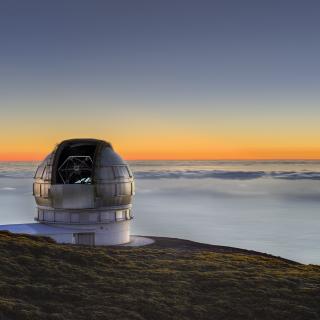
The IAC is an internationalized Spanish research centre aiming to achieve major advances in the understanding of the laws that govern the origin and evolution of the various forms of matter/energy in the Universe. Outstanding results are expected in key areas of research such as Solar physics, Sun-Earth connections, Exoplanetary systems, Solar
